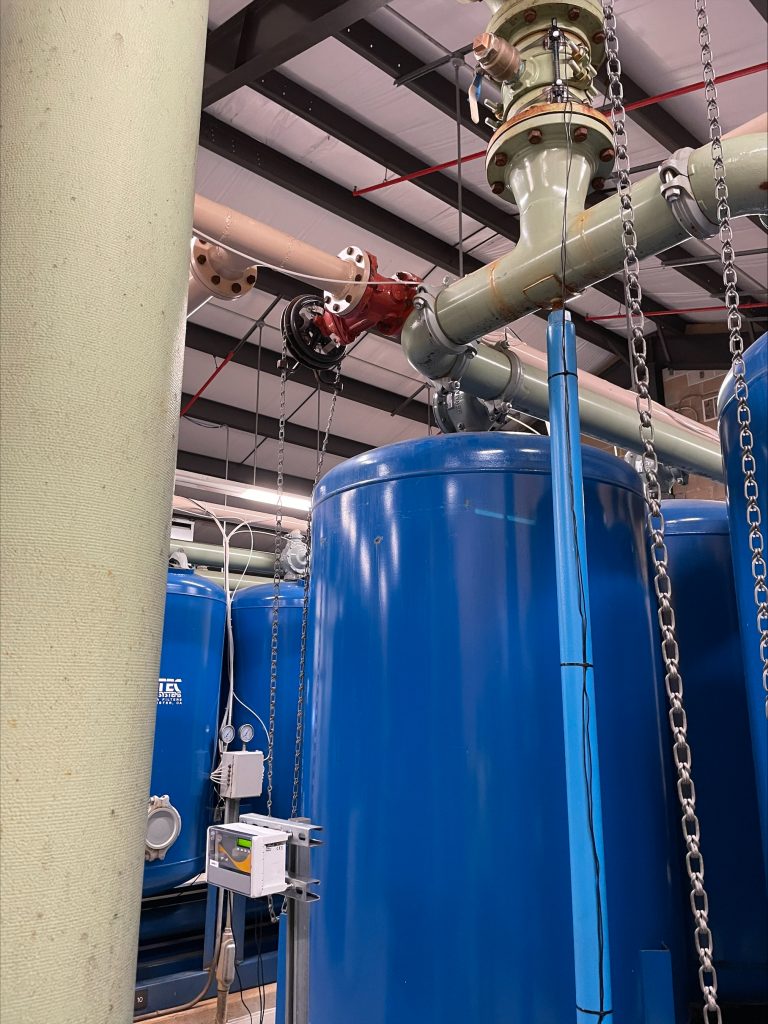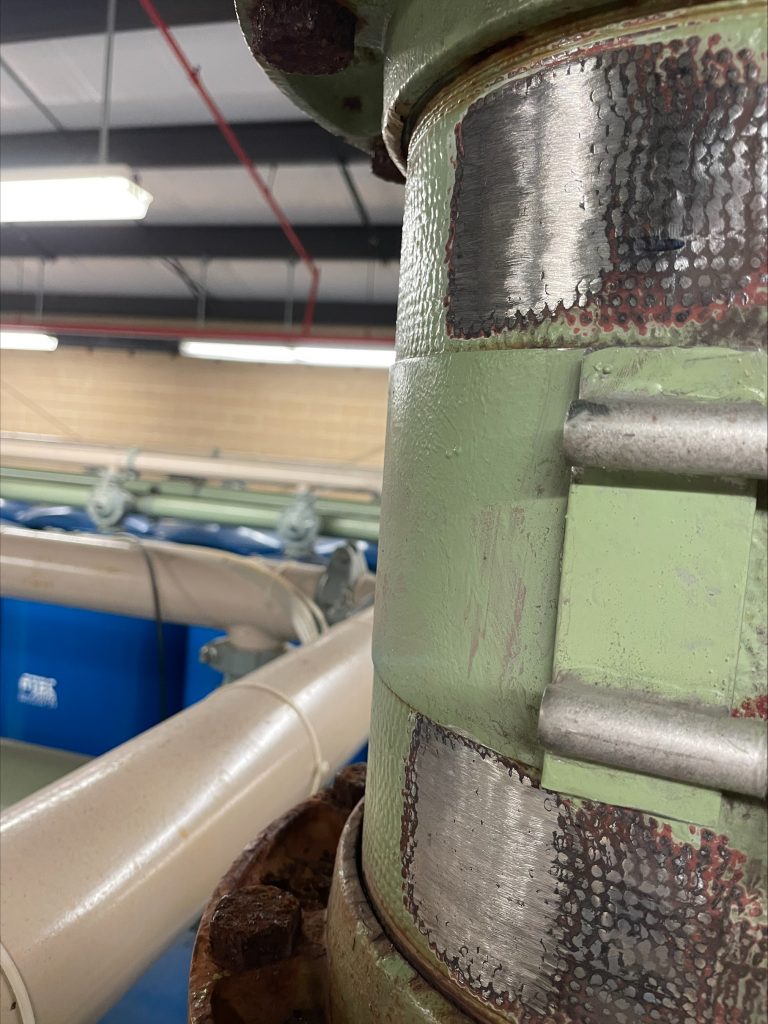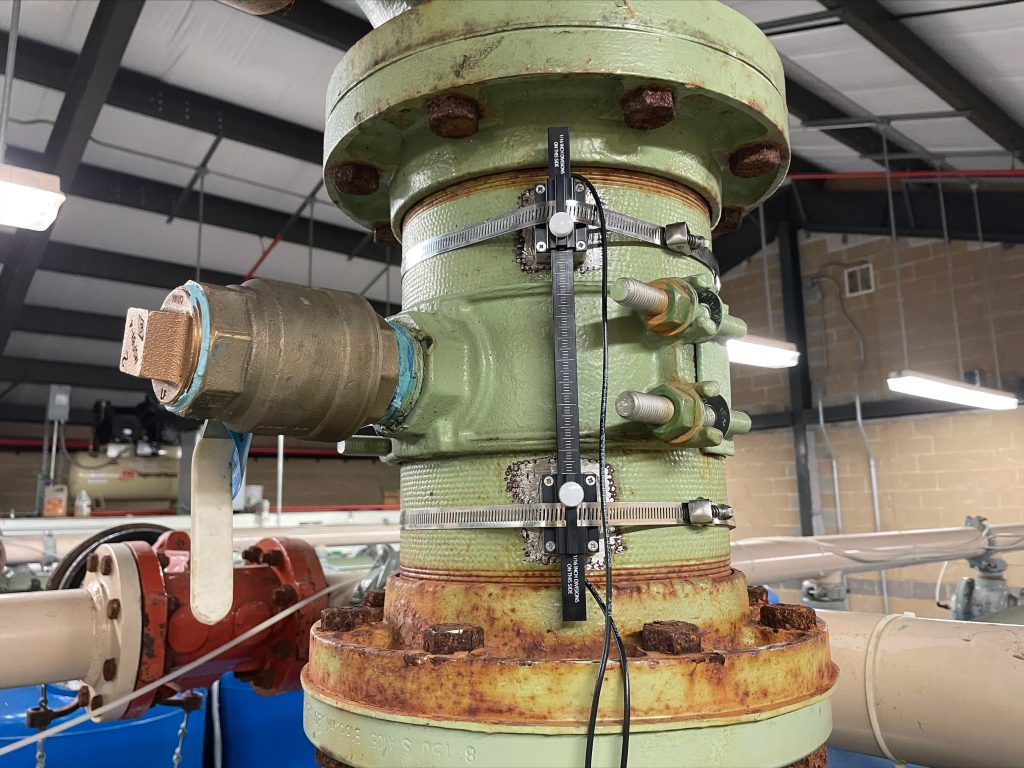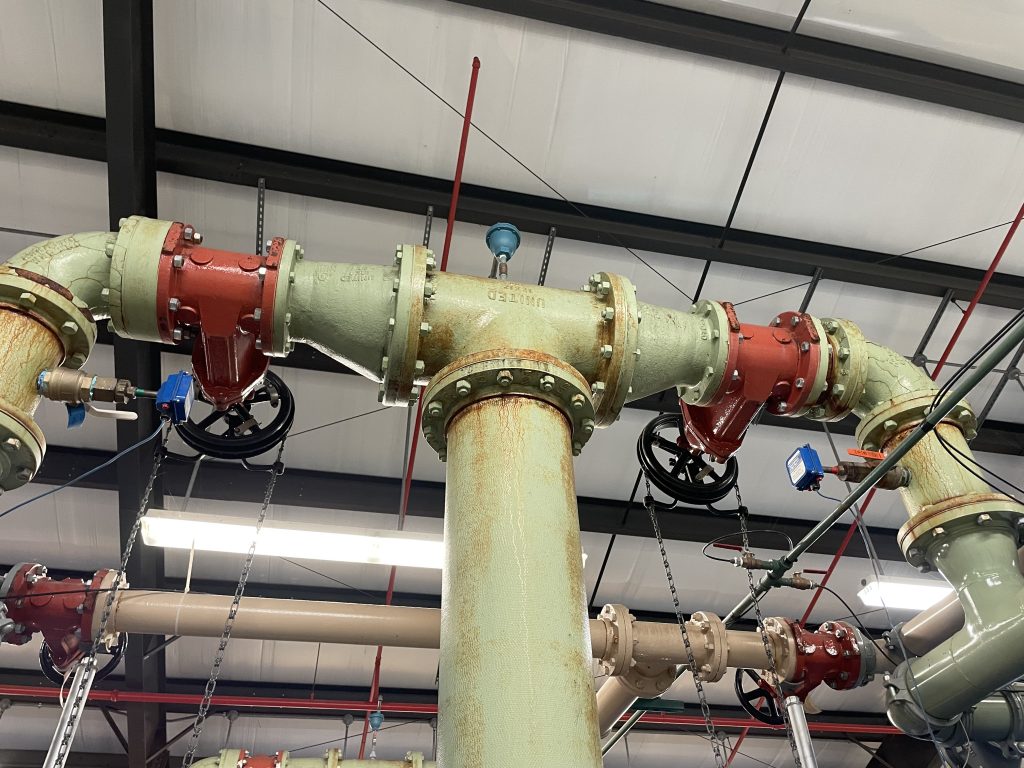This village, just outside of Chicago, owns two HMO filtration plants that were built to remove radium from its deep wells. Both plants were constructed in a similar fashion approximately a year apart. To track how many gallons were flowing through each bank of filters, the plant had been constructed with Seametrics meters. These particular meters insert into the pipe via a saddle tap and measures downward flow by a paddle spinning with magnets at the tips of the paddles. These magnets cross a sensor that translate into a GPM flow. This past year they started to exhibit some erratic readings but nothing a cleaning couldn’t fix, typically. This problem progressed and what was found was rust attached to the magnets on the paddle blades. When the paddle would stop rotating, there would be no readout or output signal. Originally the village set out to replace these meters with mag meters or an insertion type meter but due to the constraints of it being a down flow application and the small spool section they had to get a measurement from (14” flange to flange). Many of the suppliers couldn’t fit their meter into the tight space requirements, with the joints and bends in the pipe up and down stream, accuracy would have been compromised. A demo of the Micronics portable flow meter, PF333, by the local representative performed very well. Initially, the village was skeptical that it could provide the readings they needed, but it actually proved more accurate than their previous meters, prior to the troubles they started having with them. Purchase and installation of the wall mounted U1000 units were straight forward. With a little help from technical support over the phone, they had the four units they purchased up and running in a day. Attached are photos of the installation and the previous setup, along with photos that show the constraints we had for pipe lay length.





